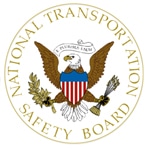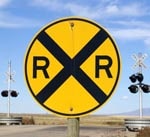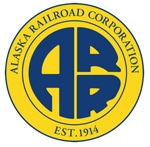 U.S. Sen. John Thune (R-S.D.), chairman of the Senate Committee on Commerce, Science, and Transportation, today held his second hearing as chairman entitled, “Freight Rail Transportation: Enhancing Safety, Efficiency, and Commerce.” The hearing focused on challenges facing our nation’s freight rail network created by higher demand, pending and proposed rules and regulations, and infrastructure needs. Today’s hearing continued Thune’s work to improve freight rail service for ag producers and shippers and prevent future rail service disruptions from occurring.
U.S. Sen. John Thune (R-S.D.), chairman of the Senate Committee on Commerce, Science, and Transportation, today held his second hearing as chairman entitled, “Freight Rail Transportation: Enhancing Safety, Efficiency, and Commerce.” The hearing focused on challenges facing our nation’s freight rail network created by higher demand, pending and proposed rules and regulations, and infrastructure needs. Today’s hearing continued Thune’s work to improve freight rail service for ag producers and shippers and prevent future rail service disruptions from occurring.
Thune also invited Dave Brown, Chief Operating Officer of Genesee and Wyoming, parent company to South Dakota’s Rapid City, Pierre, and Eastern line (RCP&E), to testify before the hearing. Dave spoke about the opportunities and challenges that RCP&E and other shortline railroads face.
Last Congress, the Commerce Committee held various rail related hearings, including a hearing on the rail service challenges facing shippers across the country, which included agriculture producers in South Dakota who struggled with access to reliable freight rail service during a record harvest. In addition, on September 17, 2014, the Commerce Committee passed the bipartisan Surface Transportation Board (STB) reform bill that Senator Thune and former Commerce Committee Chairman Jay Rockefeller (D-W.V.) introduced to institute common-sense reforms regarding how the STB works and to address rate disputes and service complaints.
“As 2013 and 2014’s freight rail delays and service challenges highlighted, rail service is absolutely critical to our nation’s economy. South Dakota farmers scrambled to find rail cars and watched as rail turn times worsened, delaying shipments and creating grain storage challenges for the record breaking wheat, corn, and soybean crops.
“However, those delays were not just limited to the north central United States, they also extended across the country and impacted every shipping sector and industry.
“Thankfully, this winter’s relatively mild weather and better service have provided some improvements, but there’s still work to be done.
“I am pleased that Genesee and Wyoming, the parent company of South Dakota’s Rapid City, Pierre, and Eastern Railroad (RCP&E) has joined us for today’s hearing. I look forward to hearing from Dave Brown, the Chief Operating Officer of Genesee and Wyoming, which is the largest Class II railroad in the country with over 100 shortline and regional railroads, about the opportunities and challenges the RCP&E and other shortline railroads face.
“From automobiles, to coal, to ethanol, to agriculture, rail service moves goods from farm and factory to consumer marketplaces across the country and across the globe. The U.S. Department of Transportation (DOT) notes that freight rail moves roughly 40 tons per person each year. As a nation, we rely on cost efficient, timely service to move food, consumer products, and energy resources on a daily basis.
“The private infrastructure that makes up our nation’s freight rail system is costly, as old tracks and equipment require ongoing maintenance and investment. Our nation’s railroads continue to invest in new track, sidings, locomotives, and car resources with the goal of serving their customers. Class I railroads and shortlines alike face increasing demands for prompt, reliable, and safe service.
“In 2014 freight traffic increased nearly five percent over 2013 levels, and we should seek solutions that foster an even stronger freight rail network to meet this increasing demand.
“The Federal Railroad Administration (FRA) has proposed or finalized over 15 new freight rail safety rules since the passage of the Rail Safety Improvement Act of 2008, and many of these regulations will take effect in 2015.
“Not only is the Positive Train Control (PTC) mandate looming, with its December 31st deadline, but the DOT has announced that it expects a crude-by-rail regulation to be published around May of this year.
“Although the PTC deadline is quickly approaching, it remains unattainable. Through the end of 2014, railroads have invested over $5 billion in PTC, and they expect to spend billions more in the coming years.
“They have begun installation of the radio towers, locomotive technology, and other PTC infrastructure, but full compliance with the statutory requirements cannot be achieved by the end of this year. The FRA and the Government Accountability Office have documented the immense technical and programmatic challenges with implementing PTC.
“As a result of these challenges, the DOT has reported that the deadline will not be met and has offered a proposal to ensure the benefits of PTC are realized. I look forward to working with my colleagues on a legislative fix to ensure that we can set a more realistic implementation timeline for this important safety improvement.
“I am also closely monitoring the proposed crude-by-rail requirements.
“I have expressed concerns to the Office of Management and Budget as well as the DOT about the unintended harms that could result from the proposed rule. The DOT estimates its proposed crude-by-rail rule could cost nearly $6 billion, and it acknowledges the rule would increase network delays and out-of-service time for rail equipment.
“Without question, we must improve the safety of our nation’s rail system, but I am concerned about the unattainable deadlines the rule proposes. Like the PTC mandate, there are very real impacts when federal agencies set unreasonable and, many times, unachievable deadlines.
“Among other things, the DOT issued this proposed rule without analyzing the potential tank car shop capacity needed to retrofit or replace over 100,000 DOT-111 tank cars. Shippers have raised concerns about a tank car shortage, with a disruption in energy supply transportation, if DOT finalizes this rule with an unattainable deadline. I look forward to working with my colleagues, stakeholders, and the Secretary of Transportation on a realistic timeline for such a phase-out.
“While safety can and should be improved, we certainly do not need to build in system-wide delays and congestion like we have witnessed during the past year and a half.
“Our transportation network connects port to rail to truck. Delays, burdensome regulations, and failing infrastructure disrupt our nation’s economy and cost jobs. So, we must work together to find workable solutions.
“In addition, we must ensure that the Surface Transportation Board, which is tasked with resolving railroad rate and service disputes and reviewing proposed railroad mergers, can provide effective and efficient oversight of the rail industry.
“This committee has a great deal of work to do in addressing freight rail service and safety in addition to passenger rail reauthorizations. I hope members will bring forward thoughtful solutions as we address these challenges.”
 The National Transportation Safety Board on Tuesday issued its annual tally of Most Wanted Transportation Safety Improvements, adding to the list for the first time the issue of the safety of railroad tank cars carrying crude oil and ethanol.
The National Transportation Safety Board on Tuesday issued its annual tally of Most Wanted Transportation Safety Improvements, adding to the list for the first time the issue of the safety of railroad tank cars carrying crude oil and ethanol. Kansas City Southern Railway Co. (KCSR) has begun employee training and data surveying as part of its effort to implement positive train control (PTC) by year’s end.
Kansas City Southern Railway Co. (KCSR) has begun employee training and data surveying as part of its effort to implement positive train control (PTC) by year’s end. WASHINGTON – In a new report updating the industry’s progress on installing positive train control, the nation’s freight railroads said that a year-long moratorium on installing 20,000 communication antennas imposed by the Federal Communications Commission, followed by a lengthy federal approval process mandated by the agency, has seriously delayed the implementation of nationwide interoperable PTC. Whereas freight railroads once projected that by 2015 they would have PTC installed on 40 percent of the network mandated by FRA, they now believe thanks to the FCC issues only 20 percent of the PTC network will be up and running by the Congressionally imposed deadline.
WASHINGTON – In a new report updating the industry’s progress on installing positive train control, the nation’s freight railroads said that a year-long moratorium on installing 20,000 communication antennas imposed by the Federal Communications Commission, followed by a lengthy federal approval process mandated by the agency, has seriously delayed the implementation of nationwide interoperable PTC. Whereas freight railroads once projected that by 2015 they would have PTC installed on 40 percent of the network mandated by FRA, they now believe thanks to the FCC issues only 20 percent of the PTC network will be up and running by the Congressionally imposed deadline. Wabtec Corp. has signed contracts valued at $16.6 million with Alaska Railroad Corp. to provide Positive Train Control equipment and services, the Wilmerding-based company announced Wednesday (April 2).
Wabtec Corp. has signed contracts valued at $16.6 million with Alaska Railroad Corp. to provide Positive Train Control equipment and services, the Wilmerding-based company announced Wednesday (April 2). The Metrolink passenger railroad Thursday (Feb. 20) will become the first commuter service in the nation to roll out a sophisticated collision avoidance system designed to overcome human error.
The Metrolink passenger railroad Thursday (Feb. 20) will become the first commuter service in the nation to roll out a sophisticated collision avoidance system designed to overcome human error.